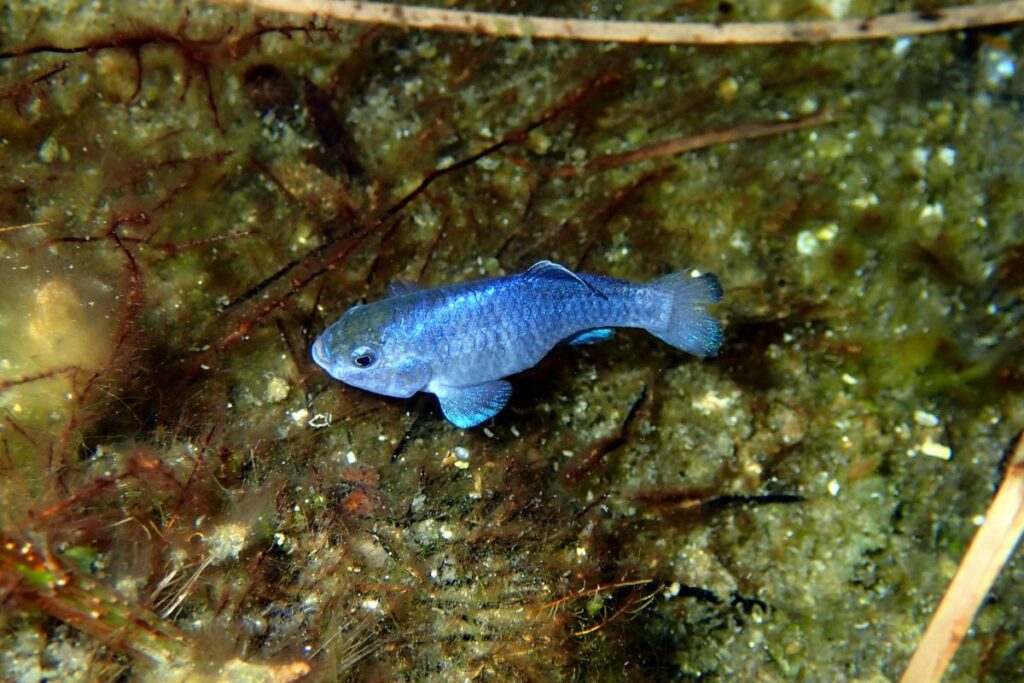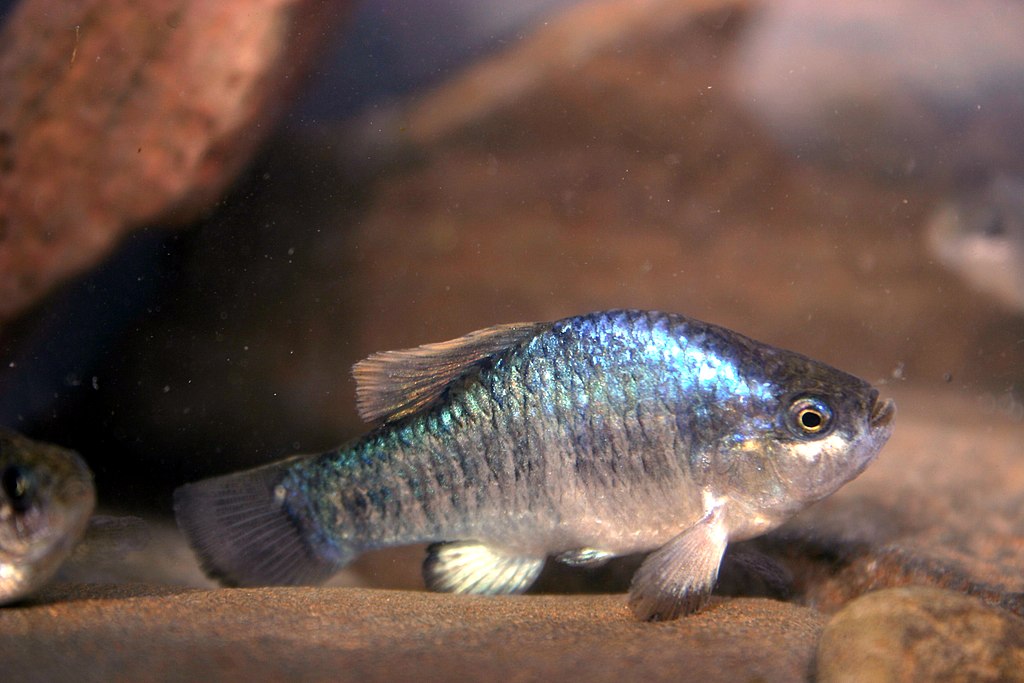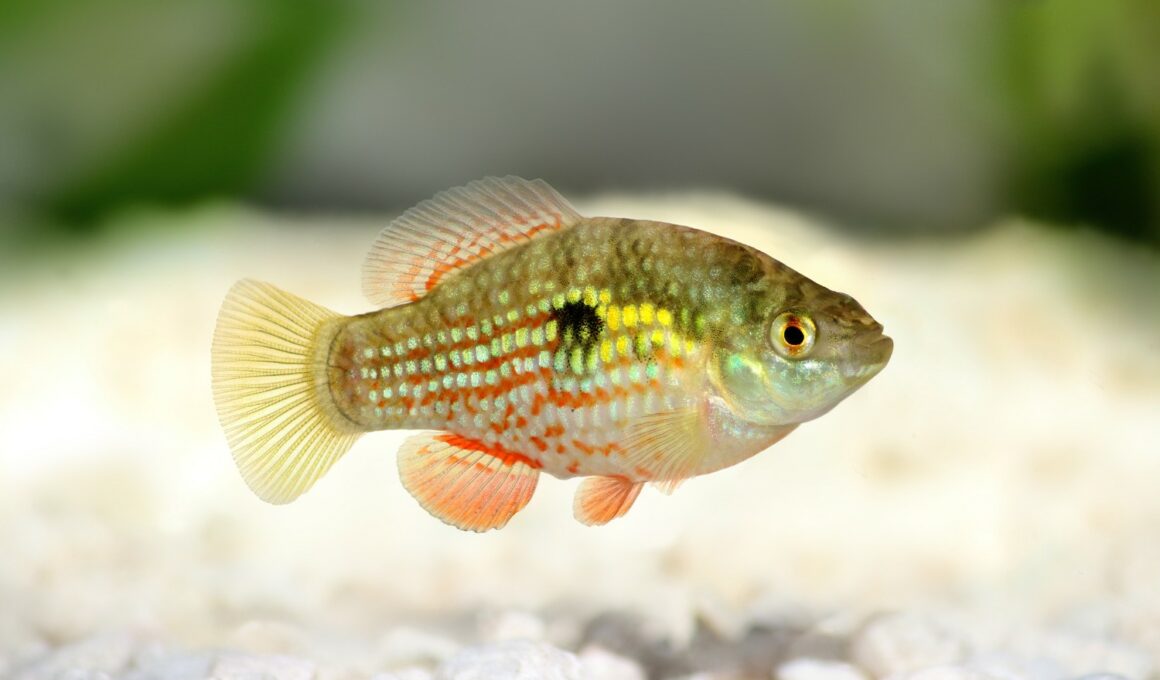In this article Show
These tiny wonders of the aquatic world always manage to catch my eye, and if you’re reading this, they’ve likely caught yours too. Originating from some of the most unique habitats, pupfish are a testament to nature’s ability to adapt and thrive.
But while they might seem small and simple, caring for them in a home aquarium requires a certain level of knowledge.
Having spent countless hours with my nose pressed against the glass of my own tanks, I’ve had the privilege of watching these little swimmers dart and dance in their watery homes.
And over the years, I’ve learned a thing or two about what makes them truly thrive. Whether you’re a seasoned fish keeper like myself or just dipping your toes into the world of aquariums, understanding the basics of pupfish care is crucial.
So, let’s dive in together, shall we? From tank setups and dietary needs to lifespan and even breeding, we’ll cover all you need to know to give your finned friends the best life possible.

Pupfish Species Overview
The name “pupfish” might evoke images of tiny, playful creatures—and in many ways, that’s not far from the truth. But before we delve into care specifics, it’s essential to understand the diverse world of pupfish species and the fascinating habitats they call home.
Pupfish belong to the Cyprinodontidae family. While multiple species are scattered across North and Central America, they’re often recognized for their small size, vibrant colors, and spirited behavior.
Each species has its unique quirks, but they all share a tenacity to adapt to some of the most challenging environments. One of the most well-known pupfish species, the Devil’s Hole pupfish, resides in a single, deep limestone cavern in the Nevada desert.
Meanwhile, the Death Valley pupfish can be found in the hot springs of California’s Death Valley, enduring temperatures that most fish would find intolerable. Other species like the Yucatan pupfish inhabit freshwater cenotes and marshes in Mexico’s Yucatan Peninsula. Yet another, the Comanche Springs pupfish, was native to Texas but is now considered extinct.
In terms of appearance, pupfish can range from silvery-blue hues to vibrant yellows, and even some with stunning iridescent displays. Typically, males are more colorful, especially during breeding seasons, which they use to attract females and fend off rival males.
Most pupfish species tend to stay small, averaging around 1 to 2.5 inches in length, though this can vary slightly depending on the specific species.
The varied habitats of the pupfish, from scorching desert springs to serene freshwater pools, are a testament to their adaptability. Their ability to survive and thrive in such diverse conditions is nothing short of awe-inspiring and is a reason many aquarists, including myself, are drawn to them.
Ideal Tank Setup for Pupfish
Creating a comfortable and stimulating environment for pupfish is akin to setting up a cozy home for a dear friend. Drawing from their native habitats and the experiences of many seasoned aquarists, let’s navigate the steps to crafting the perfect home for these adaptable swimmers.
1. Tank Size Recommendations
Despite their small size, pupfish are active swimmers. For a group of up to 5 pupfish, a 10-gallon tank is often adequate. However, if you’re keen on creating a community or hosting more pupfish, consider opting for a 20-gallon tank or larger.
Keep in mind, that more space doesn’t just mean more room to swim; it means a more stable environment, which is especially crucial for these sensitive species.
2. Water Parameters
Pupfish are adaptable, but a neutral pH (around 7.0) is generally safe. It’s crucial to test your water regularly and adjust if necessary. Drawing from their native habitats, a temperature range of 68-82°F (20-28°C) is often suitable.
However, specifics can vary between species, so it’s worth checking based on your particular pupfish. While pupfish are resilient, drastic changes in water parameters can stress them. Ensure that any changes made are gradual.
3. Substrate and Decor
A sandy substrate mimics their natural habitat and allows them to exhibit typical behaviors like sifting through the sand for food. Introduce smooth rocks, driftwood, and aquatic plants.
Not only do these provide hiding spots and play areas, but they also enhance the tank’s aesthetic appeal. Avoid sharp or rough decorations that might injure your fish.
4. Tank Mates
Pupfish are generally peaceful but can be territorial, especially during breeding seasons. Compatible tank mates often include small, non-aggressive species.
Think along the lines of small tetras, rasboras, and some species of snails and shrimp. When introducing new tank mates, monitor their behavior to ensure there’s no bullying or aggression. A harmonious tank is a happy tank.

Dietary Needs of Pupfish
A proper diet is the cornerstone of a thriving, vibrant fish. Like humans, fish benefit from a balanced, varied diet to keep them at their best. With their energy and zest for life, Pupfish have specific dietary needs to ensure they flourish. Let’s delve into the dietary world of these tiny wonders.
1. Natural Diet in the Wild
In the wild, pupfish are opportunistic eaters. Depending on their specific habitat, their diet may consist of algae, small invertebrates, detritus, and microscopic organisms. This diverse diet ensures they receive a mix of proteins, fats, and other vital nutrients. Such variety is something we should aim to emulate in captivity.
2. Best Foods for Pupfish in Captivity
- Commercial Options: Quality flake and pellet foods designed for small freshwater fish are suitable as a staple diet. These formulations are created to offer a balanced mix of nutrients.
- Live or Frozen Foods: Occasionally treat your pupfish to live or frozen foods like brine shrimp, daphnia, or micro-worms. These options are protein-rich and mimic the invertebrates they consume in the wild.
- Vegetable Matter: Given their natural inclination to graze on algae, offering vegetable supplements like spirulina flakes or blanched vegetables can be beneficial.
3. Feeding Frequency and Portions
Due to their active nature, feeding pupfish in small amounts 2-3 times a day is best. This approach mimics their natural grazing behavior and ensures a steady energy supply.
One of the cardinal rules in fishkeeping is to avoid overfeeding. Give only what they can consume in 2-3 minutes. Overfeeding can lead to poor water quality and health issues for the fish.
Lifespan and Health of Pupfish
The shimmering display of a healthy pupfish darting through your tank is a sight to behold. But ensuring their vibrancy and longevity goes beyond just feeding them right; it delves into understanding their general health and life expectancy. Here’s a closer look at these captivating creatures’ lifespan and health aspects.
1. Average Lifespan of Pupfish
In ideal conditions, most pupfish species can live up to 1-3 years. While this might seem short compared to some other aquarium fish, remember that pupfish face numerous challenges in the wild, making their life expectancy even shorter.
Our aim in captivity is to maximize their lifespan by providing the best care possible.
Genetics, diet, water quality, and overall care can significantly influence how long your pupfish live. With meticulous care, some hobbyists have even reported their pupfish living slightly beyond the average expectancy.
2. Common Health Issues
Stress Signs
A stressed or unwell pupfish might display faded colors, reduced activity, or erratic swimming patterns. Such behaviors can indicate water quality issues, dietary deficiencies, or potential diseases.
Parasitic and Bacterial Infections
Like all fish, pupfish are susceptible to common aquatic ailments like ich, fin rot, and internal parasites. Early detection and treatment are vital.
Preventative Measures
Regular water changes, stable water parameters, and a balanced diet are your first defense against most health issues. Quarantine new fish before introducing them to your main tank to prevent potential disease introduction.
When to Seek Help
If you notice prolonged symptoms or if standard treatments don’t seem effective, consulting fellow aquarists or seeking advice from a veterinarian experienced in fish care is advisable.
Breeding Pupfish
Witnessing the circle of life unfold within the confines of your aquarium is one of the most rewarding experiences an aquarist can have. Breeding pupfish, with their unique behaviors and vibrant displays, is both an art and a science. Here’s a comprehensive guide to understanding and facilitating the breeding process of these aquatic gems.
1. Recognizing Breeding Behavior
- Males Flaunt Their Colors: One of the first signs that your pupfish are ready to breed is the intensification of the male’s colors. This vivid display is nature’s way of attracting females.
- Territorial Displays: Males often stake out and defend a specific area of the tank, chasing away rivals. This behavior, while entertaining to observe, signifies their readiness to mate.
2. Setting the Mood: Ideal Breeding Conditions
- Tank Setup: Consider setting up a separate breeding tank. This allows better control of the environment and ensures the safety of the fry (baby fish) once they’re born.
- Water Parameters: Stable and pristine water conditions are crucial. A slightly elevated temperature (by 1-2°F) can sometimes act as a trigger for breeding.
- Substrate: A fine sandy substrate is ideal as pupfish tend to lay their eggs in the sand.
- Plant Coverage: Dense, real or artificial plant coverage provides the necessary privacy and safety for the eggs and eventual fry.
3. Diet Before Breeding
Offering a high-protein diet, including live or frozen foods, can condition the pupfish for breeding. This nutritional boost ensures the females produce healthy eggs and the males have the energy for courtship.
4. The Breeding Process
After a successful courtship dance, the female will deposit her eggs in the sand or among dense plants. The male then fertilizes these eggs.
Protection Mode: Male pupfish might guard the nesting area, displaying heightened territorial behaviors.
5. Caring for Pupfish Fry
- Protection: Once hatched, fry are extremely vulnerable. If you haven’t already, consider moving adults back to the main tank to prevent them from seeing the fry as food.
- First Foods: Newly hatched fry can be fed infusoria (tiny aquatic creatures) or commercial fry foods. You can introduce baby brine shrimp and finely crushed flake food as they grow.
- Regular Monitoring: Keep a close eye on the fry’s development. Maintain pristine water conditions and ensure they’re getting adequate nutrition.
Conclusion
Caring for pupfish is a rewarding journey that teaches us the nuances of aquatic life. By understanding their needs, from tank setup and diet to breeding practices, we can ensure these small wonders thrive in our aquariums.






